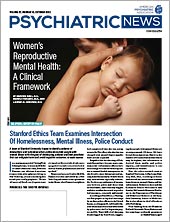As the field of psychiatry has gained in sophistication and complexity, particularly with contributions from the neurosciences, what has been shown beyond any doubt is how early life experiences have a strong and lasting effect on adult life. This includes how early relationships influence later interpersonal templates. A child who grows up in a safe environment with loving, attuned caregivers may develop a sense of wonder and excitement, as well as the ability to be curious about self and others. A child who is abused or neglected can feel overwhelmed and confused, clinging to a harmful caregiver and distorting one’s own thinking to make the abuser “good.” In the latter case, the perception of relationships is already being distorted to allow for some sense of security to be held. Psychoanalytic literature, from Sigmund Freud’s writings onward, has given pride of place to the internal world of the child. We begin “mapping” our environment from the earliest moments of life, “locking in” a working understanding of ourselves and others.
As the dialogue between neurosciences and psychotherapy has grown exponentially over the past three decades, many insights from psychoanalytic writers have come to life with objective findings from neuroimaging, neuroendocrinology, and genetics. This holds particularly true for the object relations framework, a model that outlines how interactions with “external objects” (that is, real-world people in one’s life) will become registered in the child’s mind and carried forward as “internal objects” (that is, the voice, image, and/or emotion stemming from those interactions). These “internalized relationships” from childhood will help pattern what to expect from others in future encounters, particularly those that remind us (consciously or unconsciously) of earlier interpersonal dynamics. On a brain level, working maps are patterned during sensitive periods of childhood. If events are associated with heightened emotional intensity and anxiety, higher cortical areas—used to “think through” matters—may be underused. This is especially true when early adversity is the norm, and a rigid, unchanging, emotion-based sense of self and others was laid down to allow for some sameness and predictability amid very confusing circumstances. Extreme forms of thinking about the world may be carried forward in adolescence and adulthood, since doing otherwise might reopen the “mental wounds” from early life, when there was no way of processing terrifying situations.
Psychiatrists are becoming increasingly aware of the impact of trauma on early development. When we interact with patients who are viewing us in a skewed way, it is important to understand that such a lens likely derives from earlier experiences and that they are viewing us in accordance with what the world has taught them. Similarly, if we find ourselves feeling strong emotions toward our patients (for example, to rescue or reject them), we might imagine that we are identifying with an “internal object” trait that is being assigned to us (for instance, being an all-good or all-bad psychiatrist). Unless we take a step back to understand these pulls, we risk reenacting a harmful template the patient has internalized.
One way to understand the patient’s past is to pay attention to the present, which is always rife with communicative richness on conscious and unconscious levels. We can always think about patients psychodynamically, even if the setting does not always allow us to intervene psychodynamically. We, too, will bring elements of our own internal worlds when we interact with patients, underscoring the need for personal supervision and therapy to address our blind spots.
Given its focus on the unique, personal, development-driven experience of each individual we treat, an object relations lens is, first and foremost, a humanistic one. It assigns major importance to the subjective experience of all our patients, beyond any diagnostic categories, and values the therapist-patient relationship over any other element. The relationship is the key both for understanding and for healing.
The object relations model is useful as we open our minds to the richness and dimensionality of patients across clinical settings, whether on an inpatient unit, in the emergency room, or in an outpatient office. There are exciting parallels between the object relations framework and our evolving neuroscientific understanding of early life development and of how successful psychotherapy can modify brain biology. Also, separation-individuation and attachment theories of development have significant areas of convergence with the object relations model. These considerations illustrate how critical it is for psychiatrists (whether established or in training) to have a working knowledge of object relations theory and practice. Such a foundation can help us attend to the “here and now” of the clinical encounter, bringing ourselves in as live, active co-participants in the dyad. By understanding how early life shaped our patients’ challenges in navigating self and others, it is hoped that we can notice the pressures to re-create destructive templates; position ourselves differently from early, harmful individuals in patients’ lives; and facilitate healthier relationship models to develop on the path to healing. ■


